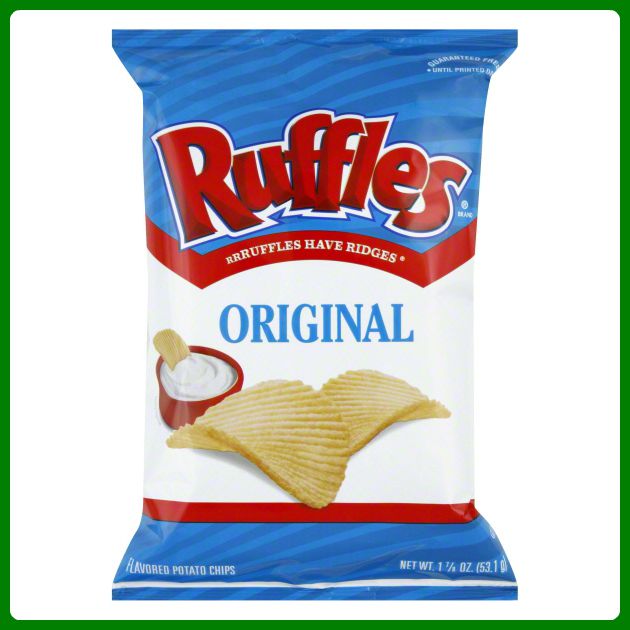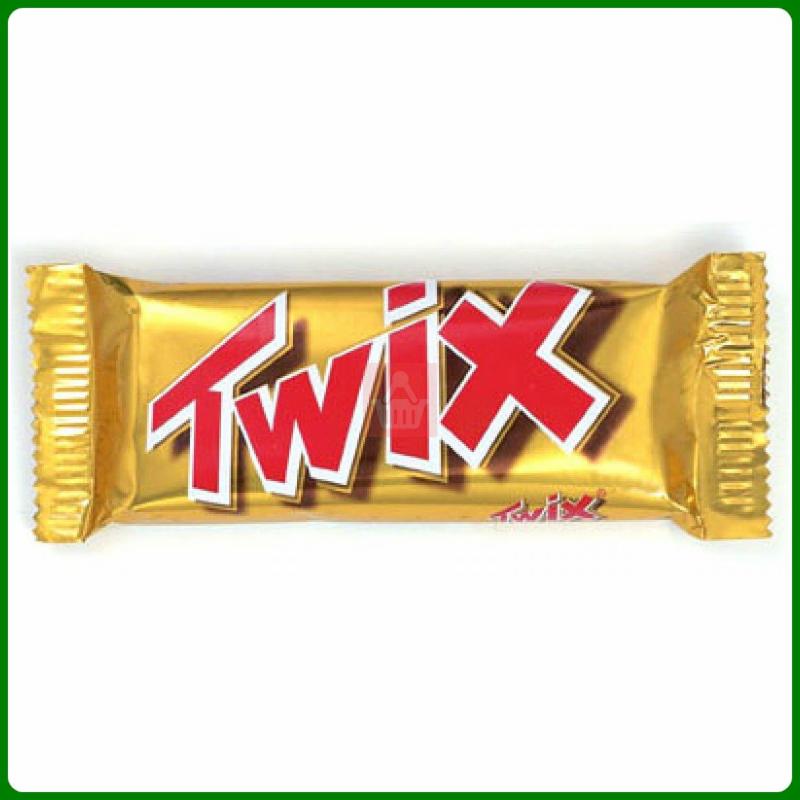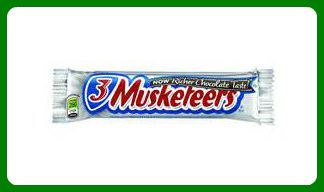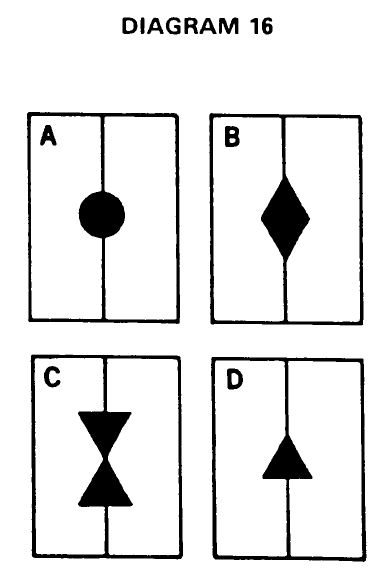|
|
|
|
|
Fall Foliage that You Shouldn't Touch

Poison Ivy, Oak and Sumac
As fall approaches you may already be seeing some of the leaves changing color, but be careful! Poison Ivy is one of the first plants to change color. Poison Ivy, Oak and Sumac can all be found in South East Texas and Louisiana. Many people have experienced the very itchy and sometimes painful rash associated with these plants. The rash is caused by the oil urushiol which is secreted from the plants' leaves, stems, flowers, berries and roots. The oil is quite sticky, so it easily attaches to your skin, clothing, equipment or pets' fur. Any contact with the oil may cause the rash.
You may encounter any of these plants when you are tying off, so it is important to keep an eye out to spot them.
So how do you tell if it's Poison Ivy, Oak or Sumac?
|
| |
Poison Oak is pictured on the left and Poison Ivy to the right.
|
The common phrase, "If it has groups of three, let it be," is often correct. Poison Ivy and Poison Oak both tend to have leaf clusters of three. Poison Ivy has green pointed leaves when they are mature. Immature leaves tend to be reddish and shiny. Leaflets are closely connected together and the middle leaf is normally larger. Poison Oak leaves tend to look similar to oak tree leaves. Both these plants can be found as a vine, shrub, or appear as ground cover, as seen below.
|
| | Poison Ivy growing within a grass field. |
Poison Sumac is a little different. It can grow as a large shrub to a small tree. Each stem will contain 7-13 leaves. It is found in swampy areas. The vein of the plant is always red. See it pictured to the right.
Some facts and myths about Poison Ivy, Oak and Sumac: - Myth Busted: Poison Ivy, Oak, and Sumac rash cannot be spread from one person to another, or from one place on your body to another. Contact with the uroshiol oil is the only thing that causes the rash. The oil can be transferred from your hands to your face, or your contaminated clothing to your body, or your pets' fur to you. If you think you may have the oil on you, your clothing, or pet, wash it with soap
 and water as soon as possible to decrease spreading the oil. and water as soon as possible to decrease spreading the oil.
- You can get the rash any time of year or even if the plant is dead. The oil is contained in all parts of the plants. This includes the dead looking stems during the winter.
- Plants vary between regions. They may be more or less colorful, grow larger, etc.
- DO NOT BURN! The oils can be vaporized when burning and then inhaled into your lungs. This can be very dangerous if you develop a bad case of the rash inside your lungs. Be careful when clearing land.
The best thing to do is to avoid any plant that may look like Poison Ivy, Oak or Sumac. If you must contact it, make sure you wear long pants, long sleeves and gloves. Wash anything that is exposed. Do not touch your face when there is a potential for exposure. The consequences may not be pretty, as seen by Duane Deen. Poor Duane got Poison Ivy near Star Fleet. |
|
TWIC Renewal Process
Recently there have been some questions about the TWIC renewal process. TWIC is no longer issuing the three year extension. You will have to go through the full renewal process and visit a TWIC center. They will mail your new card to your home address; you do not need to make two visits to the TWIC center.
It is suggested that you start the renewal process 60-90 days before your TWIC card expires to avoid delays. Remember, you cannot work with an expired TWIC. When renewing you TWIC you do not have to turn in your current TWIC card at the enrollment center; please keep your current TWIC until you receive your new one. After receiving your new TWIC card you can discard the old one. Your new card will need to be scanned at one of our offices for use in recording payroll information. In addition, please make sure that Patti Guthrie in the Covington office receives a copy of your new card to put in the personnel database. If you have any questions please do not hesitate to contact Patti at 985-893-3337.
To renew you can complete the online application or do the entire process in person at an application center. Schedule an appointment online or call (855) 347-8371 weekdays, 8 a.m. to 10 p.m. ET. Walk-ins are welcome but appointments take priority.
When you visit a TWIC application center you need to: - Provide required documentation and fingerprints. Bring your current U.S. passport or a driver's license and birth certificate. See other acceptable documents.
- Pay a non-refundable fee valid for five years with a credit card, money order, company check or certified/cashier's check.
- You can have your card mailed to your home address or you can pick it up at the application center. You can check your status online at any time.
|
 Deckhand Academy
Another Class Completed
We recently completed another deckhand class and it would have not been such a success without the assistance and expertise of Relief Captain Bill Howes and the crew of M/V Redfish, and Captain Jory Eaton and the crew of M/V St. Rose.
A special thanks to Steersman Kevin Cole of M/V Port Neches and Tankerman Tommy Woodside of M/V Redfish for their contributions and support. Thanks to all for a "job well done."
|
Higman Leadership Training Opportunities
Plan to Participate Next Month
This year there are three sessions in October for Higman Leadership training, starting with the first one Monday-Tuesday, Oct. 5-6. These meetings are specifically designed to train potential leaders to progress and grow in leadership skills and participate in team-building activities. All three meetings are held in the Training Center at the Peninsula Blvd office.
The Higman Leadership training dates are shown below so you can choose the one that works best for you. They will also be listed at the end of each Training Newsletter. However, if you delay and do not attend next month, you will have to wait until Fall 2016 when this opportunity is offered again.
So, don't delay! Call or email today to register for Higman Leadership training. Click on either name to email Janis or Kelly to reserve your space for the event and request hotel accommodations. Or, if you prefer, you can call Janis at 281-864-6010.
| Higman Leadership Seminar |
|
| Mon - Tues, October 5-6 |
|
| Thurs - Fri, October 15-16 |
|
| Mon - Tues, October 26-27 |
|
|
| Participants from last year's Higman Leadership seminar
work together on a challenging task |
|
Do I have Vision Insurance with Higman?
The quick answer is "No." However, if eligible, you may be able to receive a vision discount.
Here's how: Guardian VSP Vision Access Program
An eligible person can receive discounts on vision care services or supplies from a vision provider that is under contract with Vision Service Plan's (VSP) Preferred Provider Organization (PPO) network. The eligible person must pay the entire discounted fee directly to the VSP network doctor. Discounts are not available from providers who are not members of VSP's network.
- Eye Exams: 20% off the VSP doctor's usual charge
- Frames, Standard Lenses and Lens Options: 20% off the VSP doctor's usual charge when a complete pair of prescription glasses is purchased
- Contact Lens Professional Services: 15% off the VSP doctor's usual charge for professional services. The contact lenses are not discounted
- Laser Surgery: average of 15% off the laser surgeon's usual charge or 5% off of any promotional price if it is less than the usual discounted price
No ID cards are required, but the patient must notify the VSP network doctor that they have the
Guardian VSP Access Plan at the time of service to receive their discount. Discounts are only available from the VSP network doctor that provided the eye exam to the patient within the last 12 months.
This is not insurance. The eligible person must pay the entire discounted fee directly to the VSP network doctor. There is no charge for the Discount Vision Access program. A person must be enrolled in a Guardian dental plan in order to be eligible for the Discount Vision Access program. When a person is no longer enrolled in a Guardian dental plan, access to the vision network discounts ends also.
To find a VSP network doctor, visit www.guardiananytime.com or call VSP member services at 1-800-877-7195.
|
A Few Notes on Hot Oil Heaters
Get the water out!
Article submitted by Higman mechanic Brian (Shaggy) Todd
Here are some details explaining how moisture gets into a thermal fluid system, the effects of this moisture in the system, and the procedure to prevent excess accumulation of the moisture.
Water in the system has many disadvantages:
- Premature breakdown of thermal fluid leaving acidic contents to eat away at coils, piping and tanks.
- Pump cavitation when fluid temps exceed 212 degrees. (Heater alarms when cavitation occurs).
Steam pockets created in the barge tank heating coils create imbalance of heater transfer throughout tanks.
As thermal fluid heats and cools it expands and contracts. Thermal fluid expands 4% per every 100-degree increase. As fluid is heated air inside the expansion is displaced into atmosphere through a 2'' diameter vent pipe connected to a coldseal tank. This 2'' vent tube is the only point of atmospheric contact for the entire thermal fluid system.
As fluid cools and contracts, air is pulled back into the expansion through the 2'' tube. It is at this time that moisture from the atmosphere is pulled into the system. If maintained properly, the coldseal tank will collect the majority of the moisture. The coldseal tank should have 2" to 4" of thermal fluid in it at all times. The water should be drained off the bottom of the coldseal tank and expansion tank each time the heater is started and shutdown. Below is the procedure for draining the water. It takes approximately 5 minutes to complete the process.
Water Drainage Procedure Items Needed: 6' to 10" crescent wrench 1 to 5 gallon bucket Steps: - Remove ¾" plug at lowest point of cold seal piping.
- Open bottom ¾" ball valve on cold seal piping.
- Place bucket beneath cold seal piping drain point.
- Open top ¾" ball valve at base of coldseal tank and allow to drain until all water is drained off and solid thermal fluid appears.
- Close ¾" top ¾" ball valve at base of cold seal tank.
- Open ¾" gate valve at base of expansion tank and allow to drain until all water is drained off and solid thermal fluid appears.
- Close gate valve and lower ball valve.
- Re-install ¾" Plug at drainage point.
- Open top ¾" ball valve at base of cold seal tank and ¾" gate valve at base of expansion tank allowing thermal fluid to transfer from expansion tank to cold seal tank.
- Close both valves once the oil level in the cold seal tank reaches 3". Do not exceed 6".
The process is now complete.
For more information on your barge Hot Oil Heaters, contact Shaggy in the Repair Department. |
|
Safety Spotlight
SIRE Inspections are on your list.
SIRE Inspections are conducted onboard Higman vessels on an annual basis (unless you work for BP term charter, which is every 6 months). The Vetting Department conducts an Internal Audit (also known as a Pre-SIRE Inspection) 30-60 days prior to your SIRE expiration to confirm your equipment is in compliance with Higman policy and procedures. Once the Internal Audit is complete, the observations are entered into the "Outstanding Vetting Needs Report" as either Maintenance or Crew items. An email is then sent to the vessel and the appropriate department (Operations or Maintenance) with the list of observations identified during the inspection.
There are four basic parts to an Internal Audit / SIRE inspection:
- Documentation
- Navigation, bridge procedures, equipment and communications
- Cargo operations and the main deck
- Engine room operations/condition
Closing internal observations:
Before scheduling a formal SIRE Inspection, the Vetting Department checks the "Outstanding Vetting Needs Report" to ensure pre-inspection observations are closed out and/or corrected. If a SIRE is close to expiring with observations corrected, the vetting department will schedule the SIRE inspection.
How do you close out observations? It's easy!
Step 1. Click on "Outstanding Vetting Needs Report" found under the Maintenance column.
Step 2. Click on the date.
Step 3. Add information needed by the red arrows, then click update and you're done!
SIRE Inspections:
What does SIRE stand for? Ship Inspection REport
Inspectors are asked to report on all vessel or operational deficiencies, and to detail both positive and negative comments on the vessel's operations.
Each SIRE inspection report issued by an inspector is reviewed by all customers' ship's managers via the SIRE program. This process ensures inspection standards are maintained and closely monitored.
|
|
Eat This - Not That
Snacks - The Good and Bad Part 2
We all love to have a snack every now and then to satisfy our hunger. But, some of those snacks can be very deceiving in what you are eating. You might say "it's only one little bag or a couple of this and that. Before you know it you are filling your self up with some bad stuff.
Especially true now that school has started; we put many of these snacks in our kid's lunchboxes. We will begin with the bad stuff first. Hope this helps in making good nutritional decisions for yourself and your children. As in the past articles below is a daily nutritional guideline for adults. Children will differ considerably.
Calories - 2000 - 2500
Fat - 65g/30g Saturated Fat
Cholesterol - 300mg
Sodium - 2000mg - 2200mg
It's Your Choice!
|
|
Cheeze- It Baked Snack Crackers
(1.5 oz bag)
Calories -210
Fat - 11g/Saturated Fat - 2.5g
Bottom Line - No fiber, no protein
|

Ruffles Original Potato chips
Calories - 160
Fat - 10g/Saturated Fat -3g
Bottom Line - Nothing but empty calories
|
|
| |
Cheetos Crunchy
Calories -160
Fat 10g/Saturated Fat 1.5g
Bottom Line - Not great, could be worse
|

Twix
Calories - 280
Fat -14g/Saturated Fat 11g
Bottom Line - More "bad" fat than Snickers
|
|

3 Musketeers
Calories - 260
Fat - 8g/Saturated Fat - 5g
Sugar - 40g
Bottom Line - Candy with a lot of sugar
|
|
|
Nav Zone: Communicating with Shrimpers in Houston
Since Houston is one of the busiest ports in the US, sometimes communicating on the radio can be challenging. Relief Captain Cory Ledet, M/V Louisianan, wanted to share some tips he learned during the most recent Brown Water- Blue Water conference at the Houston Pilots Association.
Having trouble contacting a shrimper working Galveston Bay on the regular working channels, 16 and 13? Here is what one of the shrimpers attending the conference stated about the commonly used channels by the shrimping fleets: - Channel 88: shrimpers working Galveston, Bolivar, Pelican Island, Texas City, and Houston Ship Channel to Redfish.
- Channel 71: shrimpers working Redfish to Morgan's Point
- Channel 72: another channel for shrimpers working Redfish to Morgan's Point.
Rules of the Road Questions
 BOTH INTERNATIONAL & INLAND You are on a 30-meter trawler. Which day signal must you show while trawling? (Diagram 16) a) A
b) B
c) C
d) None of these day signals are correct.
BOTH INTERNATIONAL & INLAND A 60-meter vessel which is trawling is required to show which of the following?
a) one masthead light at night.
b) two masthead lights at night.
c) a red light over a white light in a vertical line at night.
d) a conical shape, apex downwards during the day.
BOTH INTERNATIONAL & INLAND A fog signalconsisting of one prolonged blast followed by fourshort blasts would indicate the presence of a__________.
a) vessel being towed fishing
b) vessel engagedin trawling
c) vessel at anchorwarning of her location
d) power-driven pilotvessel on stationunderway
BOTH INTERNATIONAL & INLAND A vesselengaged in trawling will show identification lights of__________.
a) a red light over a whitelight
b) a white light over a redlight
c) a green light over awhite light
d) two red lights in avertical line
BOTH INTERNATIONAL & INLAND Which vesselwould have no white lights visible when meeting herhead-on?
a) A vessel trawling
b) A vessel restricted inher ability to maneuver
c) A vessel mineclearing
d) A vessel not undercommand
|
Nautical Trivia
The Memphis and Arkansas River Packet Company
The Memphis and Arkansas River Packet Company was organized after the Civil War in 1868 by Capt. John D. Adams, one of Arkansas' great riverboat tycoons. He started operating packet boats mainly on the Arkansas River and the White River. He soon branched out to the Lower Mississippi River where the company regularly stopped in Memphis.
Operations on the Western Rivers were not always easy for the packet boats. Below an excerpt from the Galveston Daily News, dated Tuesday, May 18, 1869.
The steamer Leoni Leoti left Little Rock this morning for Napoleon with two barges in tow and 200 tons of government freight which was to have been reshipped on the Dexter at Napoleon. The boat struck a snag near McMill's Landing, 50 miles above Pine Bluff, tearing out her entire bottom and causing the steamer to sink in 15 feet of water. The boat and cargo are a total loss. The former is valued at $12,000 with no insurance. She belonged to the Memphis and Arkansas River Packet Company. No lives were lost. It is believed there is no insurance on the cargo.
|
| |
The steamer, LEGAL TENDER became a Memphis and Arkansas River Packet Company boat in 1876, operating from Memphis to Little Rock and Pine Bluff. It hit a snag in April 1876, forty miles below Pine Bluff and was a total loss.
|
|
|
Stern Shots
|
| |
Look what a little polish and elbow grease does for aluminum doors on M/V Sandy Point. Great job, Capt. Sam and crew!
|
|
| |
A beautiful sunset captured at Southwest Pass
by Capt. Mike Maneely of M/V Higman Leader
|
|
Dates to Remember
2015 - 2016 Tankermen Seminars
*Please note date changes for 9th and 10th sessions
|
| | Fourth Session | October 1 | | Fifth Session | November 5 | | Sixth Session | January 26 | | Seventh Session | February 11 | | Eighth Session | March 1 | | Ninth Session | *April 7 - new date | | Tenth Session | *May 31 - new date | | Eleventh Session | June 21 |
2015 Advanced Pilothouse Management/Simulator at SCI
|
First Session
| Oct 5-6 | | Second Session | Oct 15-16 | | Third Session | Oct 26-27 |
2016 Wheelman Seminar
|
First Session
| April 20-21 | | Second Session | May 2-3 | | Third Session | May 11-12 |
To schedule training please email Kelly or Janis - or call Janis at 281-864-6010.
CBT Certificates earned by Higman employees to date
during 2015: 4594
DO ALL CREWMEMBERS HAVE ACCESS TO THE HIGMAN TRAINING NEWSLETTER?
- PLEASE MAKE SURE A HARD COPY IS PRINTED AND MADE AVAILABLE FOR THE CREW.
- Add your email address with the "Join our Mailing List" button (left side near top) to get your own copy!
Answers to this weeks Rules of the Road: C,A,D,C,D
|
A quick observation:
There's an old sea story about a ship's Captain who inspected his sailors, and afterward told the first mate that his men smelled bad.
The Captain suggested perhaps it would help if the sailors would change underwear occasionally.
The first mate responded, "Aye, aye sir, I'll see to it immediately!"
The first mate went straight to the sailors' berth deck and announced, "The Captain thinks you guys smell bad and wants you to change your underwear."
He continued,
"Pittman, you change with Jones,
McCarthy, you change with Witkowski,
and Brown, you change with Schultz."
THE MORAL OF THE STORY:
Someone may come along and promise "change," but don't count on things smelling any better.
Have a great and safe week!
Sincerely, Gordie, Kelly, Janis, Dennis
|
|
GORDIE KEENAN
KELLY CLEAVER
JANIS ANDERSON
DENNIS ZINK
© 2015 HIGMAN MARINE SERVICES, Inc.
|
|
|
|
|
|
|